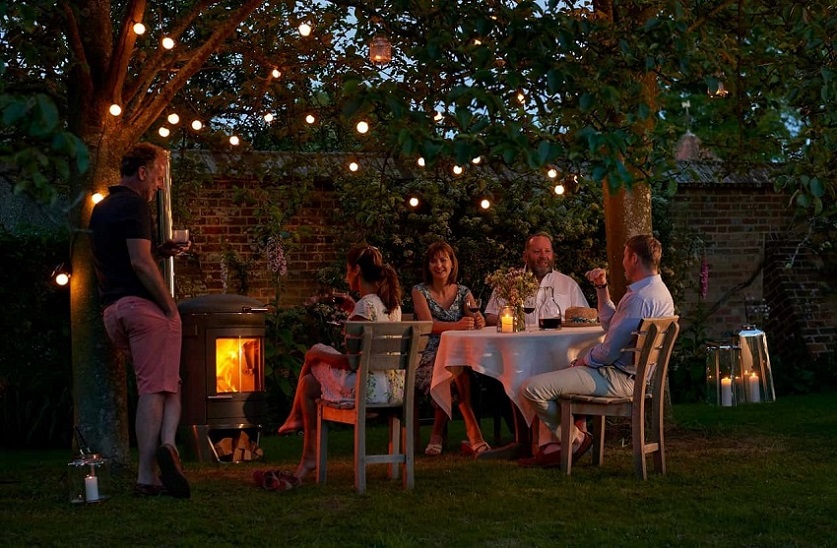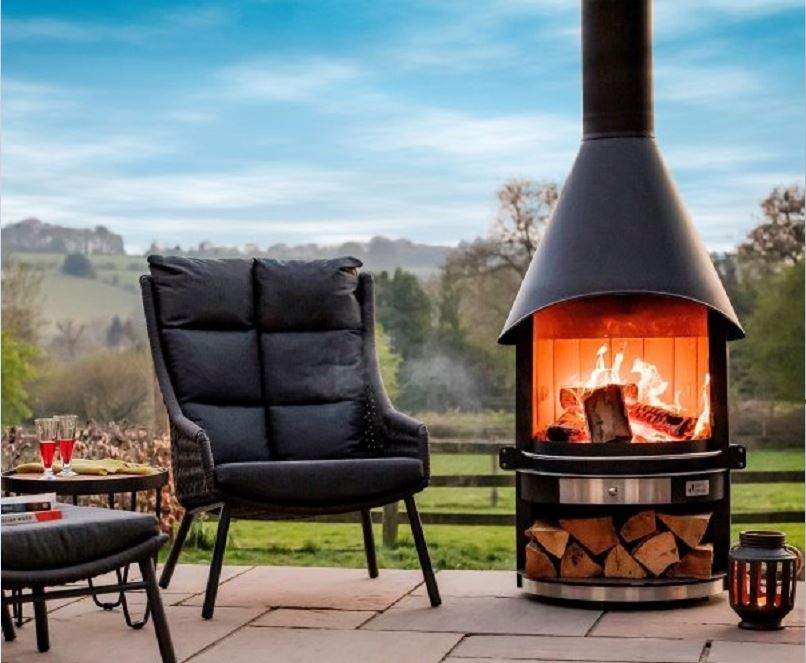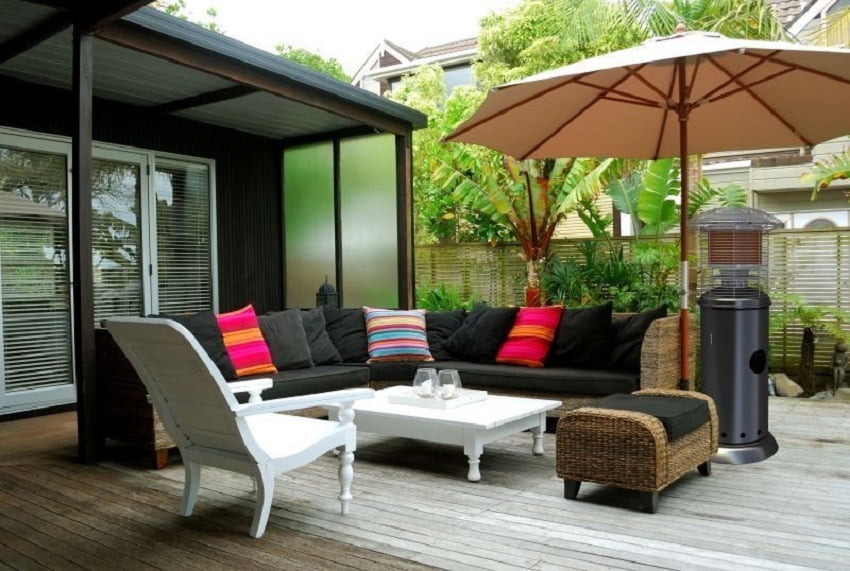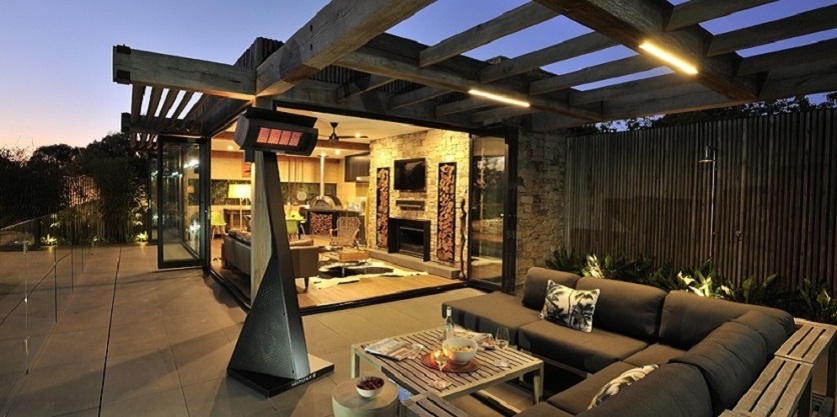A well-decorated outdoor space can act as an extension of your business or home, so it makes sense that you’d want to make the most out of it. Whether it’s a nice backyard, a pool area or a restaurant patio, adding an outdoor patio heater will let you enjoy your outdoor space long after the warm summer months are gone.

But outdoor heating solutions do more than just adding warmth – they can become an attractive focal point in the area and bring just the right ambience to it. Nevertheless, there are many different styles, types of fuels and other considerations you need to take into account before buying a commercial or residential outdoor heating unit.
Contents
Outdoor Heater Fuel Types
Outdoor heaters can be either electric, propane, wood or natural gas-powered.
- Electric patio heaters are convenient, simply because they’re plug-and-play devices, making it easy to add warmth to an area. These heaters usually require a 240V outlet and use a heating bulb to produce heat. Since most electric units use standard residential outlets, you can plug them virtually anywhere, which makes them low maintenance, especially when compared to their propane counterparts. Another benefit of electric heaters is that you can use them in partially-enclosed or covered spaces. The downside of these heaters is that you have to plug them in. Many outdoor spaces don’t have convenient access to plugs and many people don’t want to run long electric cords outside. Further, these heaters don’t have the flame effect that people appreciate in commercial settings.
- Propane heaters also provide a quick way to warm up an area. All you need is a gas tank which is easy to install yourself. Most models come fully assembled, but even if the model you choose requires some assembly, it’s usually pretty straightforward. But these heaters do more than warm up your deck or patio – they instantly become a centrepiece in any area. Real flames that look calming and tile mantels for leaving items or drinks nearby are common features. On the downside, especially if used for commercial applications, you’ll have to replace the gas tank. However, there are some models that can be installed to the wall or ceiling, as long as there’s a direct propane gas line attached to the heater.
- Natural gas heaters offer continuous heat and require little maintenance. All you have to do is attach them to a natural gas line. These heaters are less expensive to operate than electric or propane heaters, and they’re more energy-efficient. Most models come with a gas line included that’s easy to hook up. The disadvantage of natural gas heaters is the fact that you’ll probably need a plumber to set up the lines for you. Once the lines are set up, you can’t move them around.

- Lastly, wood heaters are popular for the atmosphere they provide. These heaters require more maintenance than all other types, as you have to keep adding more wood to keep the fire going, and cleaning up the ashes. Wood outdoor heating units are the most affordable option, but they’re more difficult to start than other heaters and you won’t have complete control over the amount of heat the unit releases.
Outdoor Heater Styles
Outdoor heaters are available in many different styles, the most popular being fire pit, standalone, mountable and tabletop.
- Firepit heaters are the typical residential piece we see. Most models are propane powered, and they imitate wood burning fire pits. Similar to gas grills, propane gas fire pits come with a hidden control panel, adjustable flames and automatic ignition. The flames these heaters produce dance across the steel fire bowl, fire glass or lava rocks, whereas the surrounding exterior mantel is ideal for resting plates, glasses and other items.

- Standalone heaters are the most common type seen in commercial spaces. They’re usually tall, thin heaters that provide a lot of heat, making them ideal for larger outdoor areas. They’re commonly used in event spaces, scattered around outdoor seating areas or hotel pool decks.
- Tabletop heaters vary in appearance, ranging from traditional lamps to mini floor heaters. These heaters are suitable for warming side tables or large tables in event spaces. They’re compact and portable, which also makes them versatile.

- Mountable outdoor heaters can be either mounted to a wall or ceiling. These models usually come with a stand, and they save floor space. Mountable heaters are common in workspaces, but generally require a propane or gas line for installation.
Important Safety Features
Outdoor heaters come with safety features to help prevent fire and other hazards. Some of the common safety features you’ll find are automatic shutoff switch that turns the heater off if it gets too hot; tilt-over protection, which is another switch that automatically turns off the heating element in the event of the heater getting knocked over; cool-touch glass, which is found on most commercial heaters, making them safe around kids; and safety approvals. CSA and UL tests are common safety approvals and they state that the product has been evaluated to make sure relevant safety requirements have been met.











